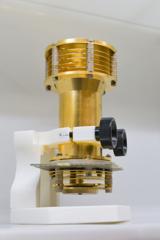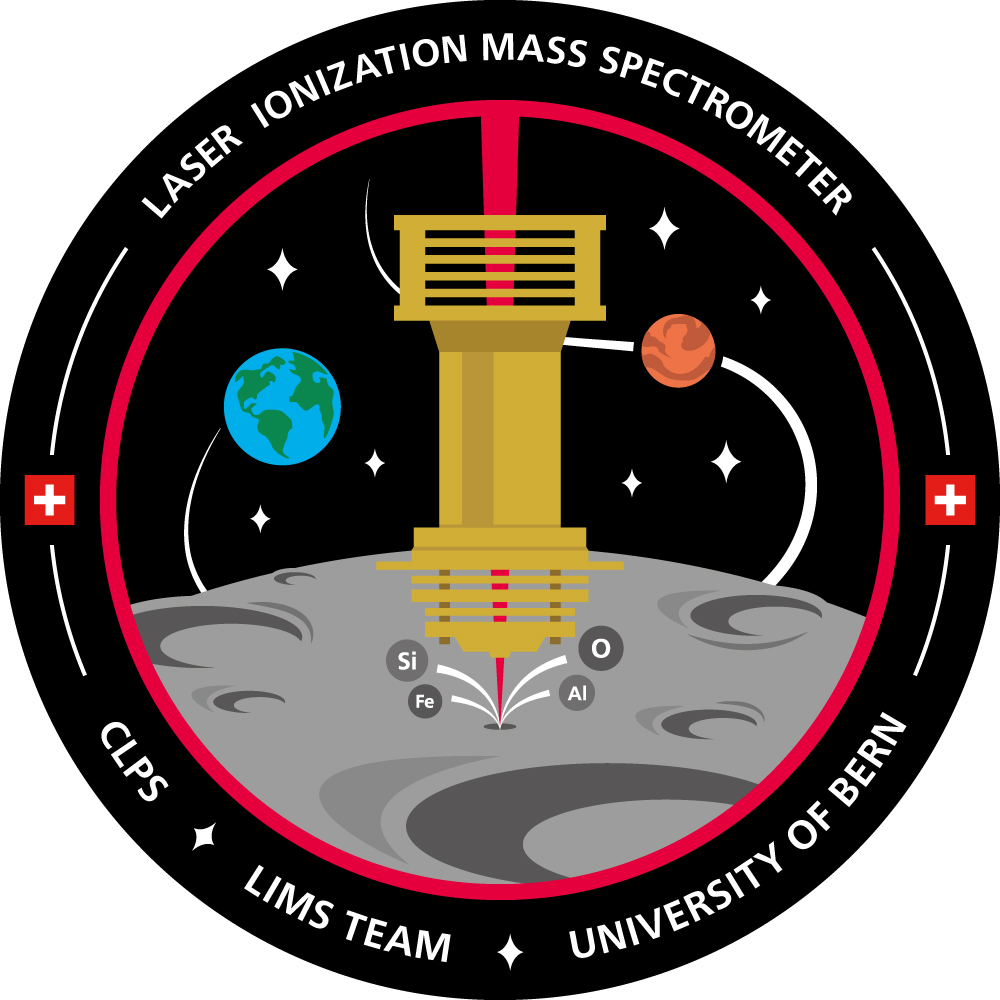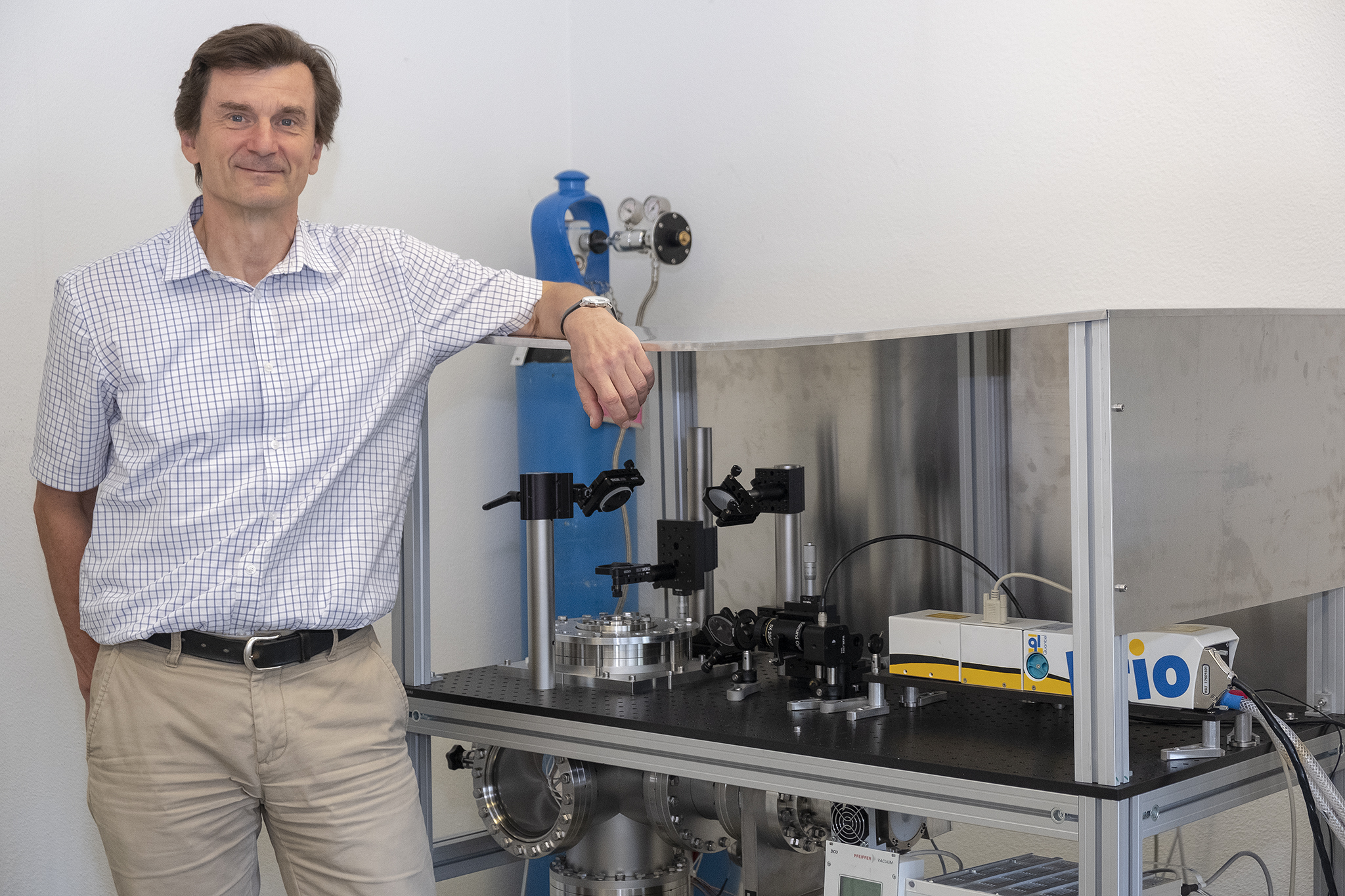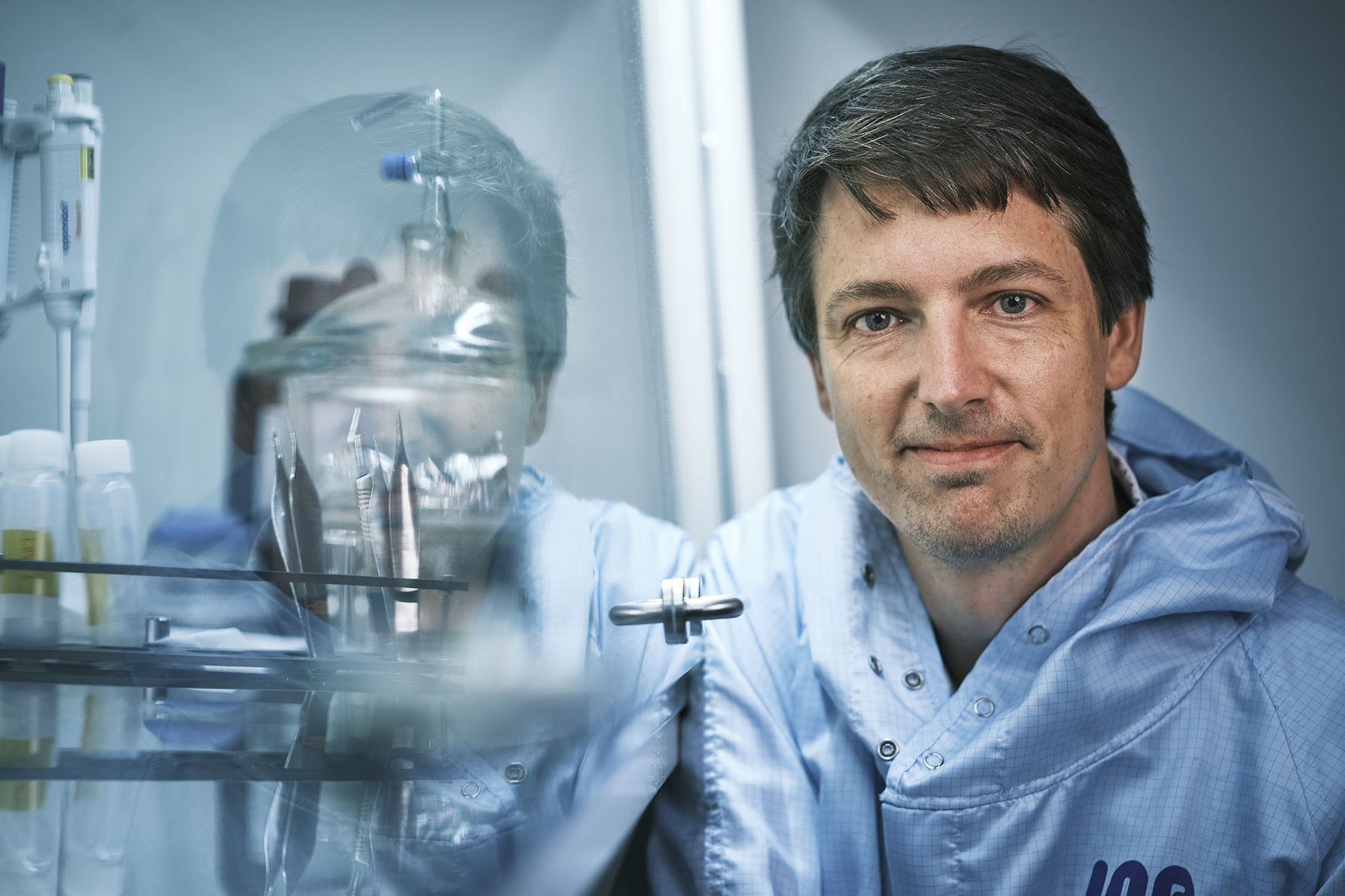Instrument from the University of Bern flies to the Moon
Following the success of the Bern solar wind sail on the Apollo Moon missions of the U.S. space agency NASA in the 1960s, the Physics Institute at the University of Bern is to return to the Moon as early as 2027 with the LIMS mass spectrometer as part of the NASA Commercial Lunar Payload Services (CLPS) initiative.
As the second man to step out of the lunar module on July 21st, 1969, the first thing that Buzz Aldrin did was to unfurl the Bernese solar wind sail and plant it into the ground on the Moon. This Solar Wind Composition (SWC) experiment, which was planned, built, and analyzed by Professor Johannes Geiss and his team from the Physics Institute at the University of Bern, was the first great highlight in the history of Bernese space exploration.
LIMS (Laser Ablations Ionization Mass Spectrometer), another instrument designed at the University of Bern, is to fly to the Moon with NASA as early as 2027, this time as part of a future NASA CLPS lunar delivery. The funding for LIMS is awarded by the European Space Agency’s ESA in the frame of the PRODEX programme (see infobox below). NASA is working with several American companies to deliver science and technology payloads to the lunar surface through the agency’s CLPS initiative. Peter Wurz, Professor for Astrophysics at the University of Bern and Project Leader for LIMS, explains: “We are very proud to be involved in NASA’s CLPS initiative and that our mass spectrometer is going to be used for the chemical study of lunar rocks.”
A highly sensitive instrument for measurements on the lunar surface
LIMS is a powerful instrument for the examination of a wide variety of samples which meets scientific lunar objectives. Andreas Riedo, Senior Project Manager for LIMS at the Space Research and Planetary Sciences WP Division of the Physics Institute, explains: “LIMS uses a pulsed laser system. The laser pulses are focused through the instrument and directed at a sample of scientific interest that we want to study.” With each laser pulse, a small layer of the sample is detached, and some of the detached material becomes positively charged. “These positively charged particles are sent back into the system, where the chemical composition is measured. This means that we measure the chemical elements and their isotopes, which then enable us, among others, to understand the chemical and physical processes on the Moon,” continues Andreas Riedo.
LIMS is to be installed on a CLPS vendor lunar lander platform, which will house a variety of instruments for lunar exploration and technology demonstrations. The CLPS delivery landing in the southern polar region of the Moon will allow LIMS to take stationary measurements on site. Andreas Riedo explains: “This region is particularly interesting, as it contains certain elements whose isotopes allow us to determine the age of the material and therefore date the timing of geological processes. This makes it possible for us to gather a considerable amount of information on the ground that could otherwise only have been generated in laboratories on Earth.”
Andreas Riedo adds: “In addition, no one before us has ever used this measurement technology on a space mission. Not only will we be the first, but we will also obtain a considerable amount of technical information about our system. This will allow us to optimize the system for other scientific questions and other missions; this is similar to what we’ve already done with the Solar Wind experiment at the University of Bern, which could be used both on the Apollo missions and to measure local interstellar gas.” As Andreas Riedo points out, in the long term, the LIMS instrument could also be considered for its application on future space exploration missions devoted to life detection, for example within the Venus atmosphere, on Mars, and the icy moons of Jupiter and Saturn.
A close collaboration with industry
In the laboratories of the Space Research and Planetary Sciences WP Division at the Physics Institute at the University of Bern, instruments for space missions have been developed and built in the in-house workshops for several decades, including LIMS. “In this area, we work closely with local industry. We will put a LIMS system that has been ‘made in Switzerland’ on the Moon. The development of LIMS began more than 20 years ago, and it is nice to be able to reap the fruits of several years of its effective use,” explains Peter Wurz. Andreas Riedo concludes: “And it goes without saying that this is an area in which we always benefit from the many years of experience and expertise of the University of Bern in instrument design.”
Funding by the SERI / Swiss Space OfficeThe Swiss federal government participates in the development of scientific instruments and partial systems as part of the PRODEX program (PROgramme de Développement d’EXpériences scientifiques) of the European Space Agency ESA. National contributions to science missions can be developed and built by project teams from research and industry through this program. This transfer of knowledge and technology between science and industry ultimately also gives Switzerland a structural competitive advantage as a business location, and it enables technologies, processes, and products to flow into other markets thus generating added value for our economy. |
Bern’s space exploration: with the world’s elite since the first Moon landingAs the second man to step out of the lunar module on July 21st, 1969, the first thing that Buzz Aldrin did was to unfurl the Bernese solar wind sail and plant it into the ground on the Moon. This Solar Wind Composition (SWC) experiment, which was planned, built, and analyzed by Prof. Dr. Johannes Geiss and his team from the Physics Institute at the University of Bern, was the first great highlight in the history of Bernese space exploration. Bernese space exploration has been working with the world’s elite ever since: The University of Bern regularly participates in space missions of major space organizations, such as ESA, NASA and JAXA. With CHEOPS, the University of Bern shares responsibility with the ESA for an entire mission. Moreover, the Bernese researchers are among the world leaders when it comes to models and calculations on the formation and development of planets. The successful work of the Space Research and Planetary Sciences (WP) Division at the Physics Institute at the University of Bern has been strengthened by the foundation of a university center of excellence, the Center for Space and Habitability (CSH). The Swiss National Science Foundation also awarded the University of Bern the National Center of Competence in Research (NCCR) PlanetS, which it manages together with the University of Geneva. |
2023/11/09




